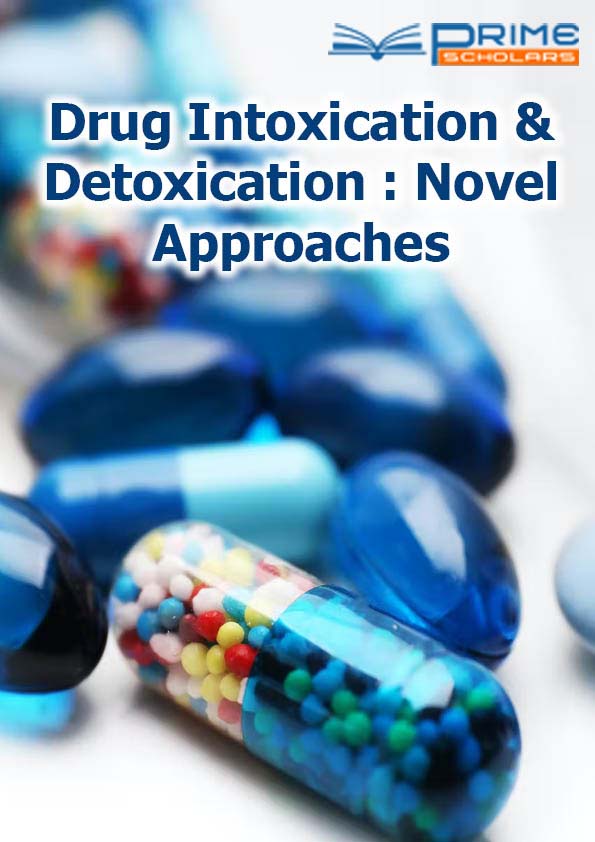Opinion - (2022) Volume 3, Issue 3
Physiochemical incompatibility of the Drug Combinations
Tong Wang*
Department of Health Sciences, Hunan University, People's Republic of China
*Correspondence:
Tong Wang,
Department of Health Sciences, Hunan University,
People's Republic of China,
Email:
Received: 01-Aug-2022, Manuscript No. DIDNA-22-14867;
Editor assigned: 03-Aug-2022, Pre QC No. DIDNA-22-14867 (PQ);
Reviewed: 17-Aug-2022, QC No. DIDNA-22-14867;
Revised: 22-Aug-2022, Manuscript No. DIDNA-22-14867 (R);
Published:
29-Aug-2022, DOI: 10.36648/DIDNA 3.3.13
INTRODUCTION
Drug mixtures may provide restorative effect; they also increase
the risk of adverse side effects caused by physicochemical conflicts
of drugs. Detectable detection of drug communication,
even with high-throughput methods, remains challenging given
the vast number of pharmaceutical formulations that make
drug discovery and clinical advancement very costly and wasteful.
It’s an initiative. A number of computational strategies have
emerged to anticipate impact from DDI and have proven to be
compelling and viable ways to reduce testing. Many of these
approaches are based on the premise that drugs with equal
elements necessarily require equal collaboration. To see the
high-level highlights of the drug, practical utilization of drug
structures, compound properties and atomic fingerprints recent
research has essentially focused on harnessing the powerful
component extraction capabilities of deep brain tissue. Because
drugs can be treated as diagrams due to their subatomic
composition, diagrammatic brain tissue has demonstrated a
remarkable display-learning ability of drug particles.
Description
His existing GNN-based approach for DDI takes full advantage
of the topological and semantic representation capabilities of
GNNs to demonstrate real-world medications and match medications
in terms of representing each medication individually.
Learn how to express yourself. Finally, the drag or drag match
expression is used for the final DDI expectation. Considering
that drugs are basically divided into several practical compositions
or synthetic bases, and each leads to common pharmacological
properties, there are several methods for refining drugs
into DDI expected bases. research has been carried out. Existing
works can generally be divided into two classes following
her. The understood way normally takes foundation highlights
as contributions of the model, which doesn’t unequivocally
get familiar with a particular base through the brain organization.
As a difference, the other methodology, including SSI-DDI, GMPNN-CS, etc, separates the particular bases of a couple of
medications in drug portrayal learning stage and foresee DDI
impact by recognizing pairwise communications between two
medications’ foundations in the last readout module, prompting
an improvement in execution over past techniques. Nonetheless,
the removed foundations of a medication pair are just
joined and utilized in the readout module for conclusive DDI
expectation as opposed to assuming an immediate part in the
medication portrayal learning. In most DDI forecast calculations,
drug portrayal learning is a singleview cycle in the message
passing module that just encodes data from the actual
medication, which might prevent precision improvement of
DDI expectation.
Conclusion
Thusly, in contrast to the above techniques, by utilizing the
benefits of the two bases and multi-sees, we propose a novel
multi-view foundation learning for DDI expectation (named
as “MSN-DDI”), which gains foundations from intra-view and
between view all the while, without relying upon extra space
information. This makes the model equally suitable for derived
settings where only the material design of real pharmaceuticals
is published. MSN-DDI includes a monotonic multi-view fundamental
extraction block as an encoder for different orders
of adjacent data (MSN encoder), layered fundamental pooling
as a fundamental extraction module to acquire fundamentals
according to the view It contains the accompanying main part,
including layers, and self-reflection. Ability as an MSN decoder
for deterministic.
Acknowledgement
None.
Conflict of Interest
The author’s declared that they have no conflict of interest.
Citation: Wang T (2022) Physiochemical incompatibility of the Drug Combinations. Drug Intox Detox: Novel Approaches. 3:13.
Copyright: © 2022 Wang T. This is an open-access article distributed under the terms of the Creative Commons Attribution License,
which permits unrestricted use, distribution, and reproduction in any medium, provided the original author and source
are credited.
